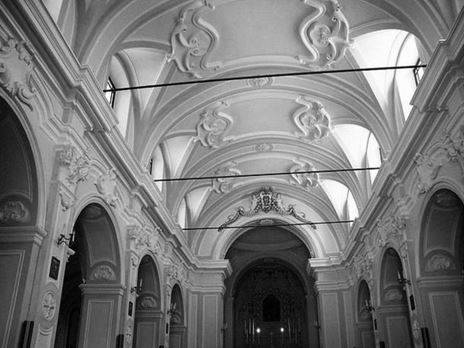L’acciaio nel restauro strutturale degli edifici storici
L’acciaio nel restauro strutturale degli edifici storici
Articolo tratto dagli Atti del XXV Congresso CTA
SOMMARIO
Lo studio condotto sulle metodologie di miglioramento strutturale degli edifici storici mediante l’impiego dell’acciaio analizza criticamente alcune tipologie di intervento sulle costruzioni in muratura, al fine di evidenziare quelle compatibili con i principi del restauro.
Se negli ultimi decenni sono state sperimentate molteplici soluzioni tecniche, oggi, nel rispetto delle caratteristiche peculiari degli edifici, è fondamentale individuare il più appropriato intervento da impiegare a seconda del grado e della forma di dissesto della struttura in esame. In tal modo sarà possibile evitare consolidamenti non basati su attente analisi storico-critiche: essi possono cancellare importanti documenti di Storia Materiale, stravolgerne il comportamento strutturale e causare danni spesso indotti dagli stessi interventi di riparazione o adeguamento.
1 INTRODUCTION
In recent years the engineering practice introduced ever more advanced intervention techniques for the consolidation of masonry buildings. Especially in the second half of the twentieth century, the principal “material” receiving the structural "care" being adopted in restorations was an un- known, unreliable and amorphous structure and it inherently enclosed a terrible original sin in the eyes of the engineers educated only by the theory of elasticity: no tensile strength could have been credited to it. Thus an essential requirement was missing: the homologation of masonry structures to elements to be treated with the methods of continuum mechanics was compromised.
This problem could be solved by the widespread use of innovative materials (concrete, steel) in order to recreate structures to be analyzed through the well known modeling used for framed systems. However from a historical point of view the use of reinforced concrete would have impoverished the historical buildings in terms of formal and material values. Instead in many cases steel used to be more suitable to the consolidation of masonry constructions, because it does not significantly alter the distribution of the seismic masses thanks to its light weight, and it promotes conservation thanks to its skill to better collaborate with the existing structures.
2 INTERVENTION CRITERIA
The identification of the material to be used for consolidations is not the only point of the restoration problem. Intervention criteria have to be followed after analyzing the construction history and geometries of the structures under examination, and the most proper intervention techniques have to be identified. Only consolidations based on accurate historical-critical controls may satisfy the wise and traditional principle of “minimal intervention” preventing the alteration of the original structural behavior of buildings. This criterion must be taken into account along with the concepts of “durability”, “distinctiveness”, “reversibility”, and physical, chemical and mechanical “compatibility” of the renovated parts with the original ones.
Thanks to its characteristics, steel finds its application in the consolidation of almost all the structural elements of historical constructions, and in particular walls, edge beams, decks, arches and vaults, roofs, stairways. However, because of its perishable nature, forged steel cannot be applied in restoration, except in situations where it is periodically and easily replaceable without damaging the original structures. For its use it is not possible to solve the problem related to the almost indelible stains due to oxidation whose visual impact is often particularly unpleasant. For these reasons stainless steel is always preferable.
For each construction member the interventions can be implemented in accordance with a specific methodology.
3 COLLABORATION INTERVENTIONS
Collaboration interventions include a number of measures aimed at improving the performance of the existing structures by the addition of a new set of structural elements entrusted to absorb a part of the external forces. In this way steelwork is conveniently used to avoid certain collapse mechanisms of the structures.
For example tie rods are used to be arranged at the floor levels, in correspondence with the load- bearing walls, and anchored to the masonry structures by means of steel plates. Their use favors the box-like behavior of buildings as it gives a strong connection among orthogonal walls, and it provides an effective constraint against overturning. In addition, through an original interpretive model based on limit analysis and proposed by the author of this paper, it has been possible to verify that the insertion of tie rods also improves the in-plane behavior of walls and contrasts the typical collapse mechanism of thrusting structures such as arches and vaults by preventing the rotation of their abutments. Post-tensioned vertical tie rods, however, are to be applied only in special cases, as they significantly alter the original behavior of the historical structures by preventing the rocking motion.

Fig. 1. Gesualdo (Campania, Italy), Chiesa del Santissimo Rosario, tie rods inserted in the central nave for contrasting the thrusts of the masonry vaulted structure.
The use of steel transversal strips is useful for the stiffening of traditional decks made up with iron beams. The realization of steel edge beams as well represents a valid alternative to more invasive reinforced concrete edge beams which use to damage historical structures because of the high shear stresses they transmit to the underlying masonry parts.
CONTINUA LA LETTURA NEL PDF.
Rubrica a cura di UNICMI - www.unicmi.it
INFO - PER ABBONARSI ALLA RIVISTA COSTRUZIONI METALLICHE CLICCA QUI

Restauro e Conservazione
Con il topic "Restauro e Conservazione" vengono raccolti tutti gli articoli pubblicati che esemplificano il corretto approccio a quel sistema di attività coerenti, coordinate e programmate, dal cui concorso si ottiene la conservazione del patrimonio culturale.
